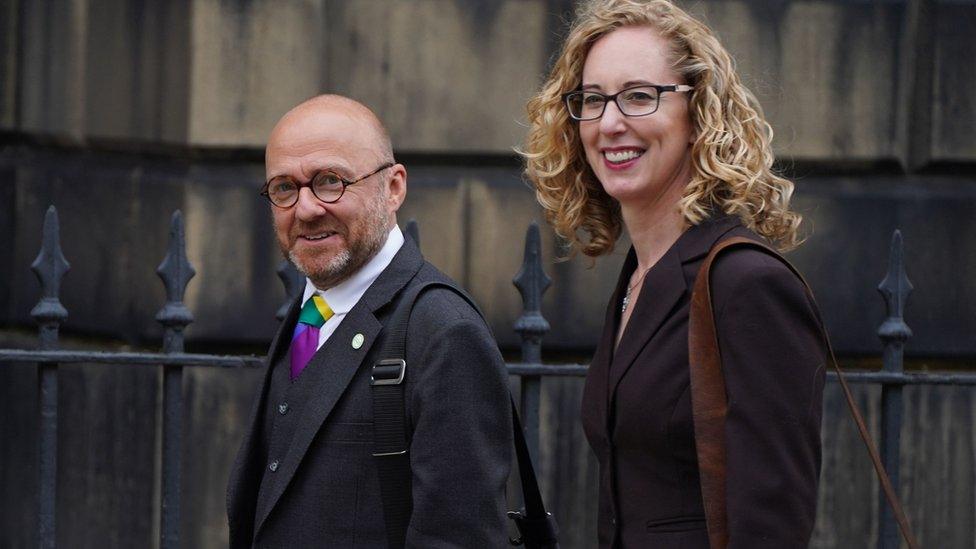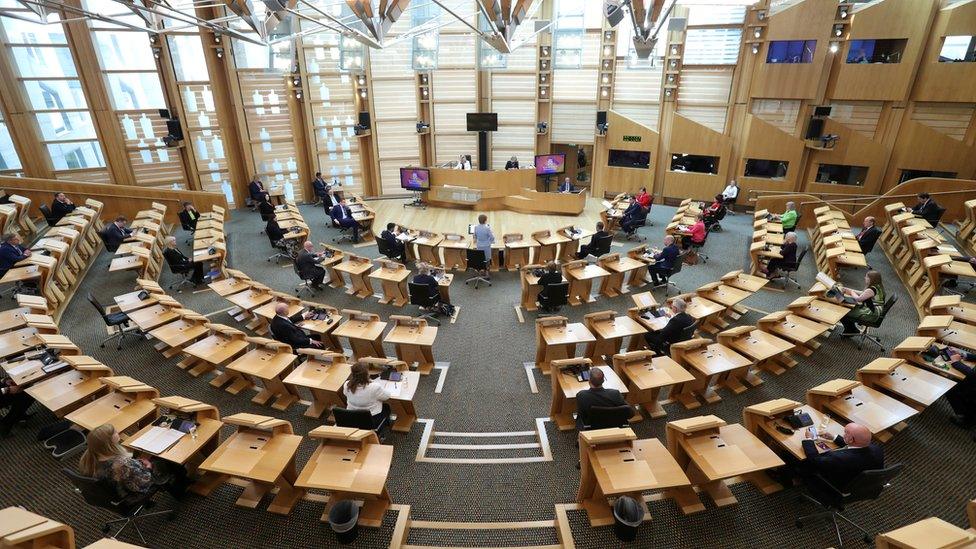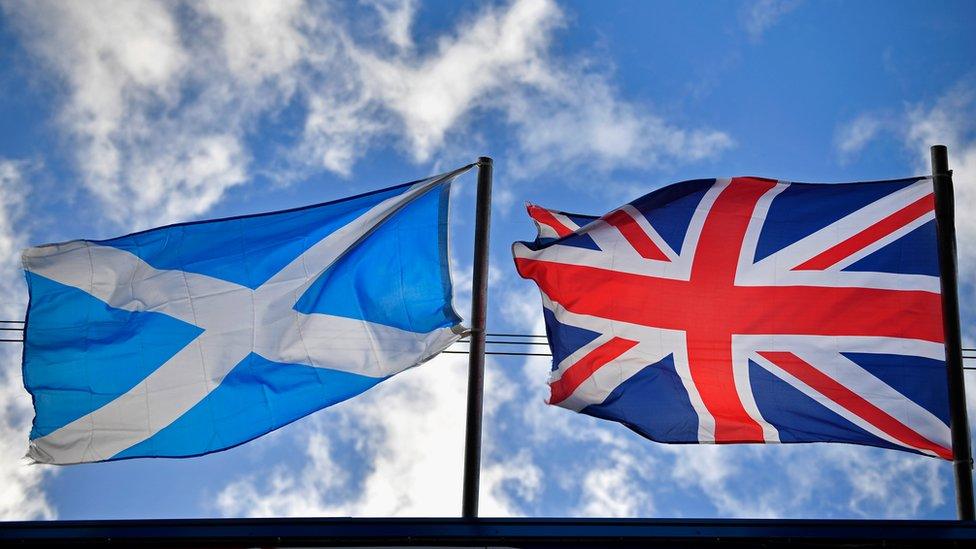Scottish Greens to enter government for the first time
- Published
- comments

The Scottish Greens are entering government for the first time ever in the UK.
They have made a power-sharing deal with Nicola Sturgeon's Scottish National Party (SNP) - the group in charge of governing Scotland.
The agreement will see two Green Members of the Scottish Parliament (MSPs) appointed as junior ministers, who could be invited to attend important meetings about how the country is run.
Ms Sturgeon said the agreement was about "doing politics and governance better to find the solutions needed to solve the problems confronting the world today".
But opposition parties have described the arrangement as a "nationalist coalition of chaos" that will be a "disaster" for Scotland.
Find out more about Scottish politics here
What is Scottish independence and why is it a big issue?

Patrick Harvie and Lorna Slater run the Scottish Green Party
Who are the Scottish Greens?
The Greens are the fourth largest party in the Scottish Parliament after winning eight seats in the election in May,
It is run by co-leaders Lorna Slater and Patrick Harvie, who are expected to be given junior ministerial roles.
The party's main focus is on protecting the environment and fighting climate change.
They want to see Scotland reduce harmful emissions quickly, as well as provide more protection for the natural environment and wildlife.
Specific policies supported by the Greens include getting rid of single-use and non-essential plastics by 2025; the introduction of more Low Emission Zones in cities; and banning the sale of new petrol and diesel cars from 2026.
They hope for our society to be transformed saying that "every industry, every part of our economy and every individual will need to rise to the challenge".
The Greens also support Scottish independence, along with the SNP, and would like to see Scotland leave the UK and re-join the European Union (EU).

Nicola Sturgeon said the deal could "find the solutions needed to solve the problems confronting the world today"
What is in the agreement?
The agreement includes a commitment to hold a referendum on Scottish independence within the next five years.
Other policy areas the Greens and SNP agree on include:
Increased investment in active travel and public transport, with the aim of providing a "realistic and affordable" alternative to car use
More support for the marine renewables and offshore wind sectors
Investing at least £1.8bn over this parliamentary session in energy efficiency and renewable heating

The Scottish Parliament is run from - or sits at - Holyrood in Edinburgh
Why was this agreement made?
The Scottish government is formed from the party that holds the most seats in parliament and it is led by the first minister, who appoints a number of other ministers to be in charge of lots of different departments like education, health and finance.
A political party needs to secure 65 out of the 129 available seats in Scotland to win an overall majority, and this can give them more power to make big decisions at Holyrood.
In May's elections the SNP finished with 64 seats, which meant it formed the next government. However this still wasn't enough to give the party an overall majority.
The SNP have relied on votes from other political parties, including the Scottish Greens, to get their policies passed into law.
Now, this official agreement with the Scottish Greens gives the SNP the numbers they need to be able pass things like new policies and budgets, even making way for another independence referendum.
In 2014 a referendum was held giving people in Scotland the chance to vote on whether or not they wanted to be part of the United Kingdom (England, Wales and Northern Ireland).
They could answer yes or no to the question: "Should Scotland be an independent country?"
Voters decided they didn't want it to be a separate country, with the result being a 55% to 45% split in favour of staying in the UK.
Since then the SNP has asked for another vote to be held but the UK government has said the referendum was a 'once in a generation' event.
What next?
Two Greens are set to be chosen to become ministers and will now have more of a say on how Scotland is run and the policies the SNP make.
These ministers could be invited to attend cabinet meetings when their areas of interest are being discussed, with the Green co-leaders attending cabinet at least twice a year.
Nicola Sturgeon also believes that this is a step towards a future independence referendum.
Boris Johnson has previously said he does not want Scotland to leave the union and in 2020 the UK government voted against holding another referendum.
- Published4 May 2021

- Published14 January 2020

